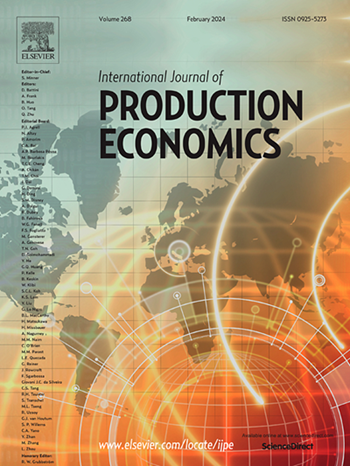数字化对财务的影响——一个滞后的分析
IF 10
1区 工程技术
Q1 ENGINEERING, INDUSTRIAL
引用次数: 0
摘要
虽然数字化是一种普遍的现象,但它并不总是产生预期的经济效益(数字化悖论),研究在这个意义上提供了相互矛盾的结果。本研究旨在通过考虑潜在的滞后效应、财务指标的相互关联性以及数字化的复杂性来缓解这一矛盾。我们依靠杜邦框架来调查数字化对相互关联的财务绩效指标的影响,如资产使用效率(固定资产周转率),盈利能力(EBITDA利润率)和财务回报(ROE),具有即时,1年和2年的影响。为了评估公司的数字化程度,我们通过两种互补的方法(即机器学习算法和以关键词为中心的内容分析)分析了2012年至2022年上市汽车公司的年度报告。面板回归结果表明,数字化的财务影响并不直接。(1)提高了短期(同一年)和长期(1-2年)的固定资产周转率;(ii)但不会导致盈利能力的增加;(iii)其对ROE的影响在2年后才显著。此外,当传统技术和先进技术分别研究时,这些模式是相同的,但值得注意的是,ROE是一个例外,传统技术对ROE既有直接的积极影响,也有滞后的积极影响。这些发现表明,投资于先进数字化的公司可以通过更有效地利用资产来避免数字化悖论,而不是通过更高的盈利能力,只有从长远来看才能获得更好的财务回报。本文章由计算机程序翻译,如有差异,请以英文原文为准。
Financial impact of digitalization – A time-lagged analysis
While digitalization represents a widespread phenomenon, it does not always yield the expected financial benefits (digitalization paradox) and studies offer contradictory findings in this sense. This study aims to ease this contradiction by considering the potential time-lagged effects, the interrelatedness of financial indicators, and the complex nature of digitalization. We rely on the DuPont framework to investigate the impact of digitalization on interconnected financial performance indicators such as the efficiency of asset use (fixed asset turnover), profitability (EBITDA margin), and financial return (ROE), with immediate, 1-year, and 2-year effects. To assess firms’ digitalization, we analyze the annual reports of publicly listed automotive companies between 2012 and 2022 by two complementary methods (i.e., a machine learning algorithm and a keyword-centric content analysis). Panel regression results suggest that the financial impact of digitalization is not straightforward. It (i) improves fixed asset turnover both over short (same year) and longer periods (1–2 years lag); (ii) but does not lead to an increase in profitability; (iii) its impact on ROE becomes significant only after 2 years. In addition, these patterns are the same when traditional and advanced technologies are investigated separately, with a notable exception of ROE, on which traditional technologies exert both immediate and lagged positive impact. These findings suggest that companies investing in advanced digitalization can avoid the digitalization paradox through the more efficient use of assets but not through higher profitability, achieving better financial returns only in the longer run.
求助全文
通过发布文献求助,成功后即可免费获取论文全文。
去求助
来源期刊
CiteScore
21.40
自引率
7.50%
发文量
266
审稿时长
52 days
期刊介绍:
The International Journal of Production Economics focuses on the interface between engineering and management. It covers all aspects of manufacturing and process industries, as well as production in general. The journal is interdisciplinary, considering activities throughout the product life cycle and material flow cycle. It aims to disseminate knowledge for improving industrial practice and strengthening the theoretical base for decision making. The journal serves as a forum for exchanging ideas and presenting new developments in theory and application, combining academic standards with practical value for industrial applications.

 求助内容:
求助内容: 应助结果提醒方式:
应助结果提醒方式:


